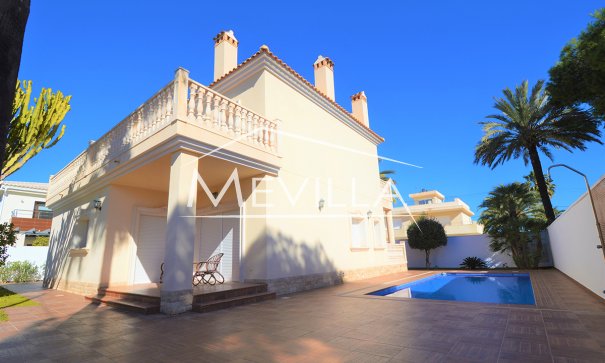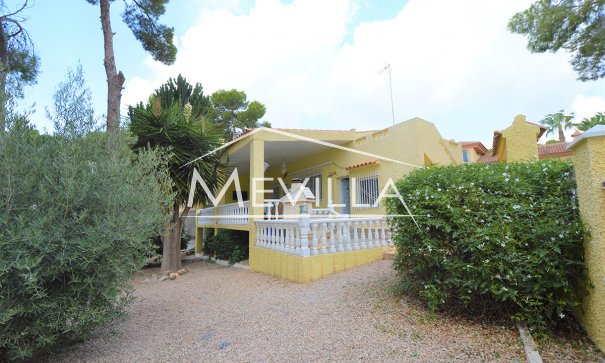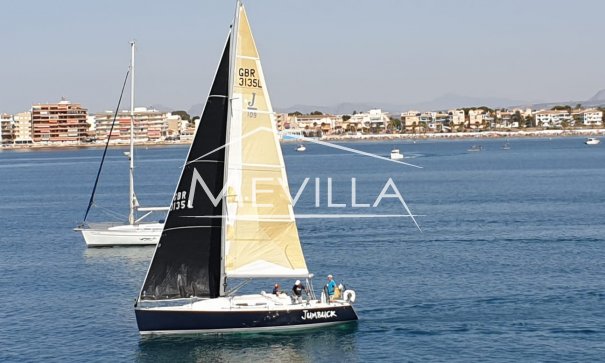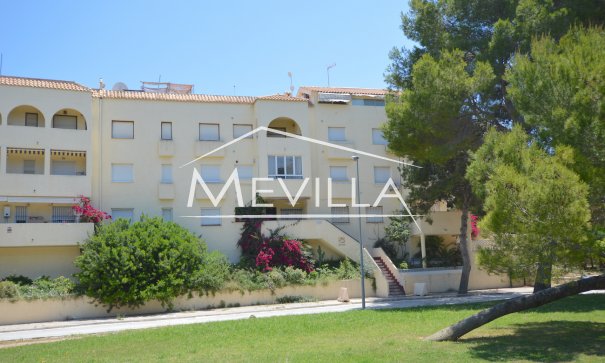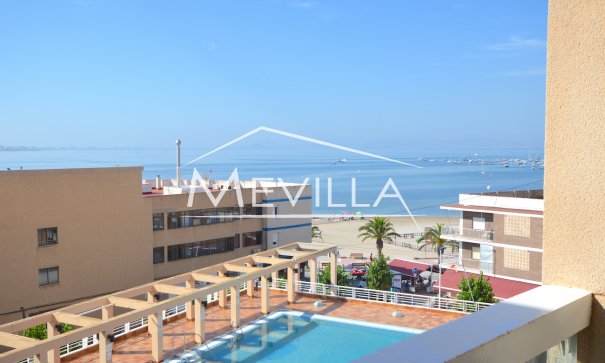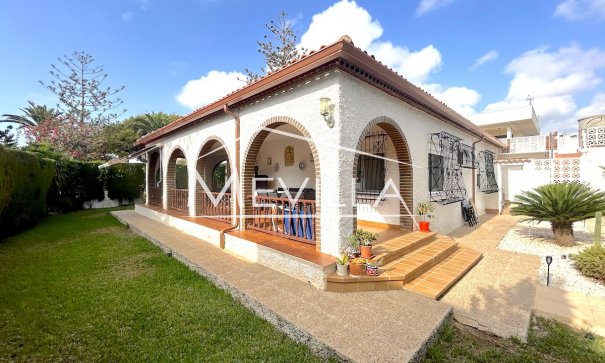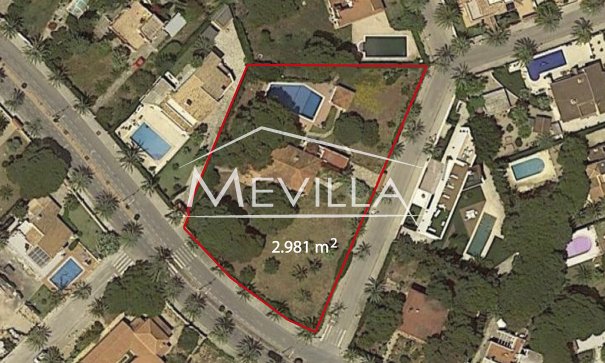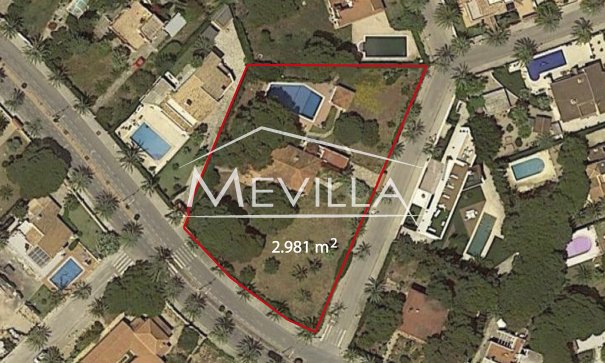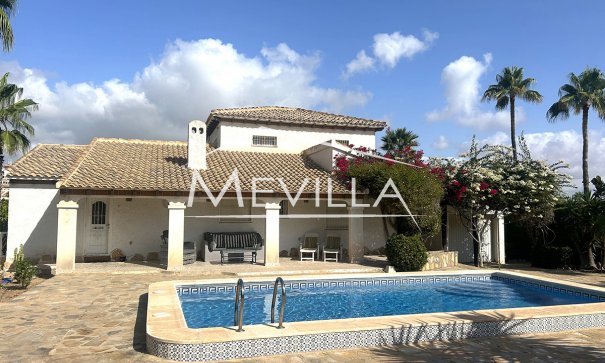Description
Costa Blanca, "Make yourself at home"
Worldwide known, not in vain it is one of the places in Europe that receives more affluence of foreign tourists, it includes the coasts of the province of Alicante that are bathed by the Mediterranean Sea, from the municipality of Denia, in the north, to Pilar de La Horadada, in the south.
It constitutes a total of 244 km of beaches, coves and cliffs. It limits to the north with the coast of Valencia and to the south with the Costa Cálida, that belongs to the region of Murcia.
Especially appreciated for its quality of life and good climate, not only does it attract the typical summer tourist, but also, as in other parts of Spain such as the Costa del Sol, there is an important colony of citizens from Northern Europe, where even in some municipalities they surpass the native population, and there are even elected officials in a few town halls.
Favorite place for the Spaniards of the center of the peninsula, many of them have in the Costa Blanca their second residence, especially Madrilenians, but also Castilian-La Mancha, Castilian-Leonese or Rioja, and even of places of Spain that belong to the coasts of the Cantabrian one and that look for among us a sunnier climate.
Among all these reasons perhaps the success of the Costa Blanca lies in the hospitality and cordiality of its native inhabitants regardless of the origin of the newcomer, which makes you feel at home.
How to get to the Costa Blanca?
The main artery that facilitates communications throughout the Costa Blanca is the AP-7, which is a toll road that links Valencia, Alicante and Murcia. This motorway receives the European E-15 code and provides communications with Western Europe, especially France and England. Also, we can find the N-332 that passes parallel to the AP-7 from the city of Alicante and that communicates with Elche, continues by the coast until Pilar de la Horadada and communicates with Murcia and Andalusia.
How to arrive by plane?
El Altet Airport, near the city of Alicante and less than 45 minutes from any of the towns on the Costa Blanca receives more than 9 million tourists a year and is one of the reference airports for tourism in Spain.
Can I get to the Costa Blanca by train?
Actually, it is quite easy, Alicante train station receives trains from all over Spain and from the north through the province of Valencia from the rest of Europe. The second means of transport is the Trenet de la Marina, which is a historic railway line that runs along the coast of Alicante in Denia and is currently operated as a long-distance tram, other train lines run inland through the valley of Vinalopó and the Hoya de Elche.
Climate of the Costa Blanca
The Costa Blanca has the best temperature all year round. Its climate has been recognized by the World Health Organization as one of the best in the world. Many people with arthritis come to the Costa Blanca and in a few days, they feel much better. In the winter months there are almost as many sunny days as in summer.
The northern part of the Costa Blanca is typically mountainous with cliffs and caves, a mixture of pebble beaches and fine sand beaches. The northern part of Altea is surprisingly green and lush.
The southern part of the Costa Blanca is quite flat with white sandy beaches, palm trees and salt flats. The south is much drier.
History of the Costa Blanca
The coast of Alicante is the perfect symbiosis between history and sun and beach tourism, as since ancient times dozens of merchant and fishing villages have made their way to its shores, creating towns and cities that have become places of great tourist interest since the middle of the last century.
Since the first settlements of the Iberian peoples on its coasts, many cultures and civilizations have visited and settled in these lands bathed by the sea, Greeks, Phoenicians and Carthaginians, visited and traded regularly with the aboriginal peoples until the arrival of the Romans who incorporated these lands as a fundamental part of their overseas provinces, also acquiring great consideration due to its agricultural, horticultural and fishing wealth, being the Costa Blanca one of the main producers of the famous "Garum".
After the fall of the Roman Empire, other invading peoples from northern Europe arrived in these lands. The Goths, who came from what would be Sweden today, arrived, settled and flourished with agriculture and trade, until the arrival of the Arabs, who made these lands one of their strategic places because of their wealth and commercial value, not in vain do a large part of the names of the towns in the province have Arab origins.
During the reconquest, these territories changed hands several times, between Christians and Muslims, until the final expulsion of the Arabs from the Iberian Peninsula by the Catholic Monarchs.
Already in modern times, from the 50's of the last centuries and thanks to the tourism boom, the Costa Blanca experienced a development that we could describe as extraordinary and many of these old coastal fishing villages grew exponentially year after year, creating wealth. Nowadays most of the municipalities of the Costa Blanca live from tourism and are dedicated to a greater or lesser extent to the service sector, although the larger cities such as Alicante and Elche have a very important industrial activity, either as a result of the port activity in Alicante or the manufacture of furniture and textiles in Elche.
Costa Blanca facilities
As it could not be otherwise, the province of Alicante and especially the area of the Costa Blanca enjoys a modern level of services in accordance with the demands not only of the native population, but also of the visitors who come every year to its coasts.
El Altet airport, recently modernized, is one of the airports that receives the most travelers in the Mediterranean area and the existence of several train stations distributed throughout the province ensures the transfer of as many people as possible who wish to use this means of transport. As far as road transport is concerned, the Ap-7 motorway and the N-332 road provide efficient communications from north to south of the Costa Blanca.
The proximity of several hospitals, strategically located, ensures health care for all people, both locals and visitors, with a high level of professionalism and deployment of means, in addition, various health centers spread throughout the towns of the coast ensure all potential users do not have to make large journeys to access health centers.
There are also several bilingual schools, some of them private and renowned, spread all along the Costa Blanca.
What to do on the Costa Blanca
To get bored visiting the Costa Blanca is frankly difficult, unless that is your real intention, since as in the rest of the Valencian Community, the Costa Blanca celebrates many of the most famous festivals in Spain, especially in the summer season, to highlight just a few, the Mystery of Elche, awarded as a World Heritage Site, the Moors and Christians festivals of Villajoyosa and El Verger, the Bonfires of Alicante, the Bous al Carrer of La Marina or of Denia.
The Fallas, although better known in the province of Valencia, are also held in Benidorm and Denia, on June 23, the night of San Juan, as in all the Mediterranean, the Costa Blanca is lit by continuous fires with more than 200 kilometers of beaches lit by fire.
To all these popular celebrations we must add those that the inhabitants of foreign origin have brought with them and which they celebrate together with the local population, making them theirs as well. We must mention, for example, the St. Patrick’s Parade, which is held every year in Cabo Roig, a town in Orihuela Costa. An idea that started with the residents of Irish origin to celebrate one of their most important festivals outside their country of origin, has become a success every year, multiplying exponentially the number of participants, to the point of being considered one of the five most important celebrations of St. Patrick's Day in the world, surpassing even those of very important cities in Ireland.
Special mention also deserves the chapter of water sports in the Costa Blanca, since the climate and the variety of its coasts, favors the practice of all types of sports related to the sea and the range of possibilities is open to the demand of all audiences, whether practicing diving, para-sailing, surfing, sailing, windsurfing, kite-surfing, etc., but if you just want to spend a pleasant time and take a bath or sunbathe, the Costa Blanca offers 78 beaches and coves, 54 of which have been awarded the Blue Flag and the "Q" for Quality. As for golf, there are several golf courses, many of them world-famous, spread throughout the province, which delight the most experienced and demanding golf lovers.
The Costa Blanca, traditionally has been related to a very specific tourist product of sun and beach, closely linked to the favorable climate with more than 300 days of sunshine and an average temperature of +20 º C, although at present, the evolution of the tourist destination and its resources are shaping an increasingly comprehensive offer, we must not neglect the proposals of interior tourism, Alicante is not in vain one of the most mountainous provinces of Spain and beyond the summer there are offers that are increasingly aligned with the sophisticated preferences of tourists.
Properties on the Costa Blanca
Unique and attractive municipalities such as Denia, Javea, Altea, Benidorm, Benissa, Orihuela Costa or Pilar de la Horadada among others make up the Costa Blanca, which has natural parks, marine reserves and a great cultural richness that make it one of the best options for establishing your second home or living permanently.
Mevilla Real Estate is the specialist in the southern part of the province of Alicante and the Costa Blanca and offers apartments, chalets and modern villas in urban areas with spectacular views of the sea or the lively streets of the towns belonging to Torrevieja, Orihuela Costa or Pilar de la Horadada. Golf enthusiasts will also have the opportunity to practice their favorite sport on the various internationally renowned golf courses in the area.
Our coastal homes have spacious terraces, bright rooms, bathrooms with hydro-massage and are within walking distance of restaurants, shops, schools and health services. Our specialty are the villas and houses located in the most select areas, on the beachfront or on spectacular cliffs. These properties and villas for sale on the Costa Blanca have several floors, extensive gardens, outdoor or heated swimming pools, parking for several vehicles or a guest house.
Let yourself be seduced by the wonders that the Costa Blanca has to offer and buy exclusive houses, villas or apartments that you can find at Mevilla Real Estate.
Summary
The Costa Blanca has been for years one of the favorite destinations of those who visit the Spanish coasts. The quality of its services, the warmth of its people, the climate and the quality and variety of its beaches have made the province of Alicante a worldwide tourist reference.
There are many visitors who decide to settle permanently in the towns of the Costa Blanca, especially in Northern Europe where English, Germans, Swedes, Norwegians, Belgians and Irish have formed their own communities and who, together with the existing native communities, have favored the creation of a fabulous multi-cultural melting pot that makes the offer even more attractive, if possible, for those who are thinking of visiting its coasts for the first time or for those who have their second home among us and are anxiously awaiting the arrival of the holiday season to return to their favorite beaches.
Start looking for your perfect home in Spain, click here to see all the properties available on the Costa Blanca right now.


















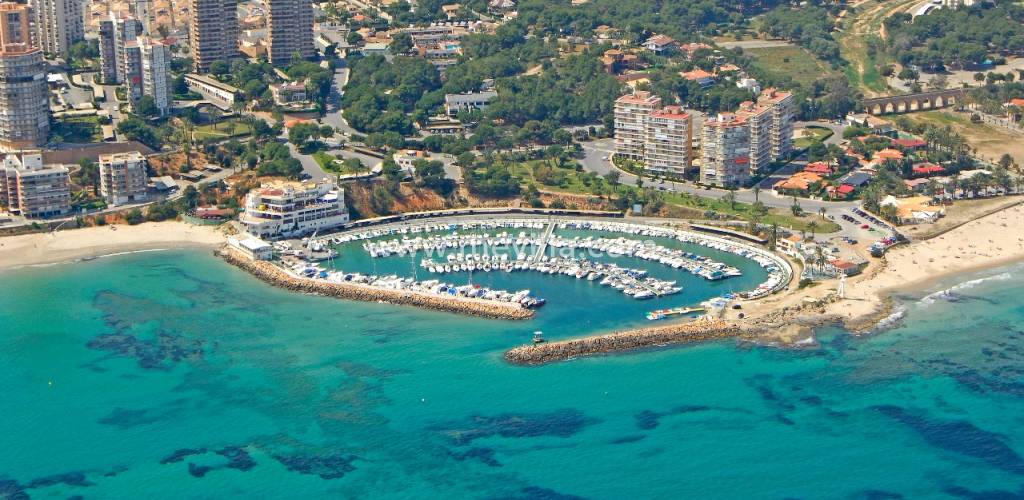
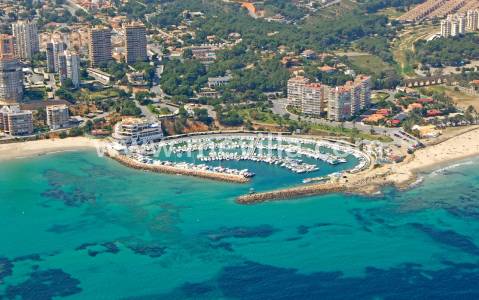
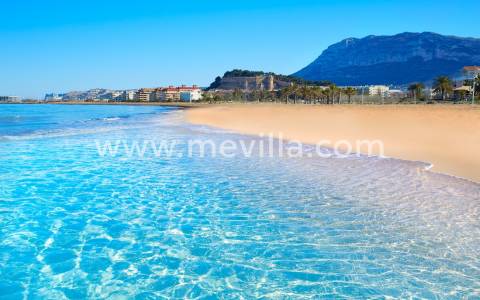



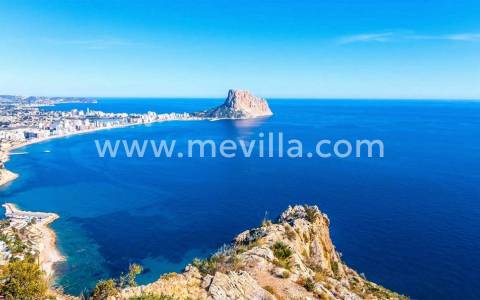
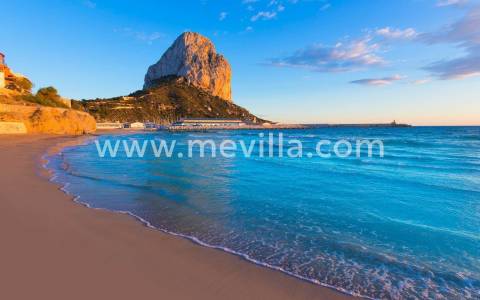
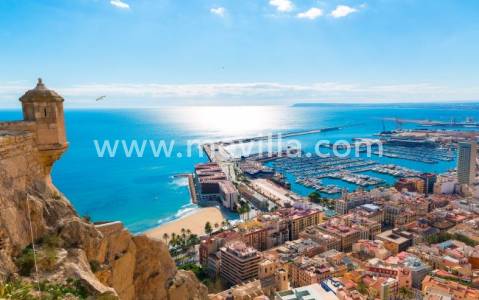
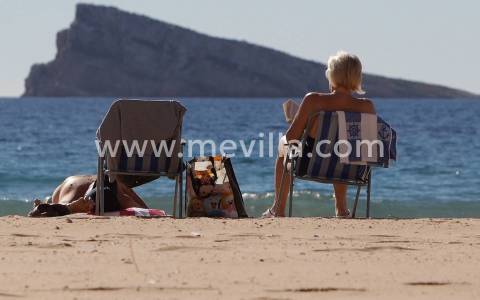
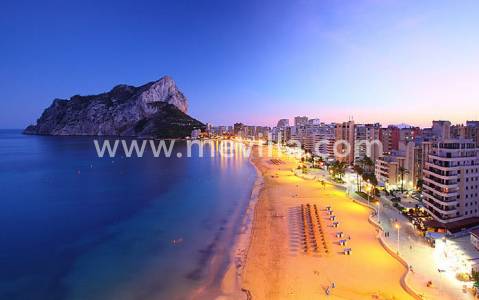

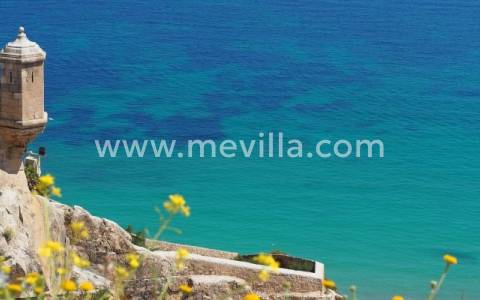
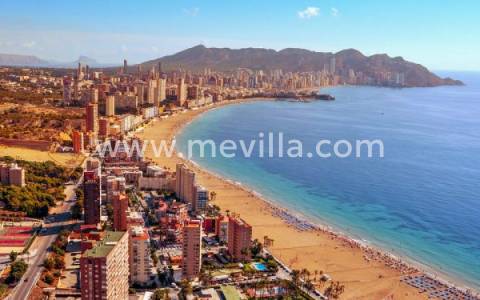

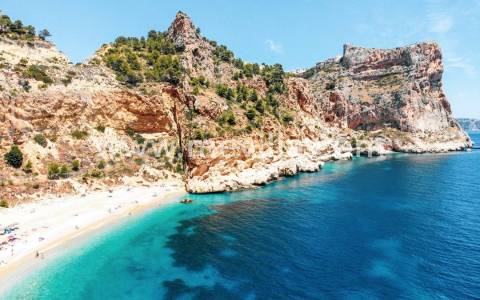
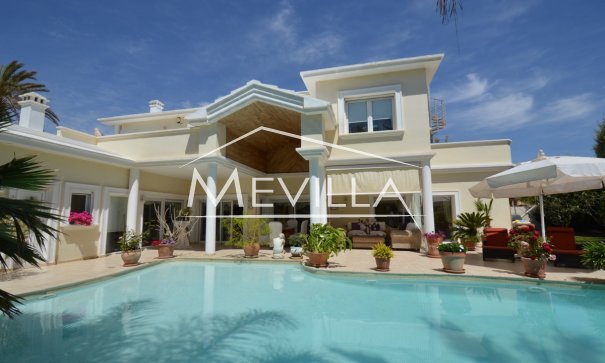
 Orihuela Costa · Cabo Roig
Orihuela Costa · Cabo Roig






